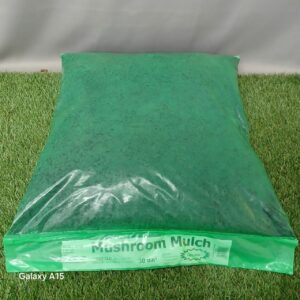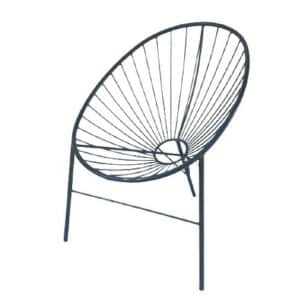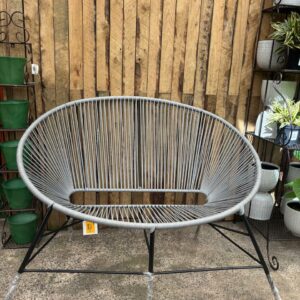Remarkable Crassulas
DIY and how-to
Remarkable Crassulas
Did you know that crassulas have a special way of reducing water loss from their leaves that makes them exceptionally water efficient plants?
South Africa’s National Water Week takes place in March to raise awareness of the vital importance of water. Gardeners can make their contribution by focusing on low water usage plants. Why not plant one or more of the remarkable and water smart crassulas?
Instead of opening the stomata (pores) on their leaves to take in carbon dioxide for photosynthesis during the day, crassulas do it at night, thereby minimising the loss of internal moisture to evaporation. Furthermore, during extremely dry periods they don’t even open their stomata at night, and simply re-cycle the carbon dioxide within the cells. As most Crassula species are indigenous to the semi-arid Karoo region of South Africa, this is a highly intelligent approach to ensuring that they survive.
This group of about 150 species ranges from large shrubs to low ground covering plants, with blooms of white or pale pink to red. All are evergreen and most tolerate mild to moderate frost. In addition, their star-shaped blooms attract butterflies and other insects into the garden.
How to grow crassulas
- Plant in garden soil that drains well. Crassulas will not survive in waterlogged soil.
- Once established, water every 2-3 months. Water deeply to reach the roots.
- Water more often during the flowering season.
- Fertilise twice a year with compost.
- Propagate crassulas taking stem or leaf cuttings in summer. Keep the potting soil moist but not waterlogged until the cuttings show new growth.
Choose a crassula
Many of South Africa’s Crassula species make delightful garden plants. The following are particularly attractive:
Pink joy (Crassula ovata) – This is the most commonly grown crassula, and is well-known as a container plant all over the world. Pink joygrows to about 1,8m with a spread of 1,5m. The succulent leaves are oval, succulent, and a glossy green. The stem is stout and gnarled and gives the impression of great age. In winter Crassula ovata is covered in bunches of pale pink, sweetly scented blooms.
The smaller Crassula ovata ‘Gollum’ (Shrek’s ears) grows to 60cm and spreads to 1m. The flowers are coral pink. Crasula ovata ‘Minima’, 60cm x 80cm, also has coral-pink flowers while the edges of the leaves are tinged red.
Use pink joy as a focal point in containers, rockeries and gravel gardens. Plant in full sun (for best flowering) or in semi-shade. It tolerates drought, wind, coastal conditions and mild frost.
Fairy crassula (Crassula multicava) – This low-growing, water smart succulent grows in the shade or the sun, and in winter its pink blooms make a spectacular display. Its compact and neat growth habit makes it an ideal ground cover plant, but it also does well in rock gardens, in hanging baskets, and as a perennial container plant. Prune if the plants become untidy.
Sosatie plant, rosary plant, Tom Thumb(Crassula rupestris) – The positioning of its grey succulent leaves has given this plant its common names. The flowers, which appear in winter, are grouped in clusters at the tip of each branch. Their colour ranges from deep pink to pale pink. In summer the leaf margins take on brilliant red and yellow hues. Although very long-lived, water smart Crassula rupestris grows slowly. Plant it in full sun in containers or hanging baskets.
Sickle crassula (Crassula falcata syn. C. perfoliata) – This summer-flowering succulent has grey-green, sickle-shaped leaves and bright red flowers. It has an upright growth habit and is 50cm tall when in flower. It grows easily and flowers best in full sunlight. It makes a good rockery or container plant.
Red crassula (Crassula coccinea) – In midsummer the blooms appear in a dense, flat-topped head at the tip of the stems. The long tubular flowers are fragrant and brilliant red, especially in sunshine. Plant this 40cm tall shrublet in full sun in a rockery, in containers, or planted in a bed. Red crassula gets untidy after a few years and it is best to replace it after about three years with new plants grown from cuttings.
Campfire crassula (Crassula capitella subsp. thyrsiflora) – Although this succulent bears white flowers in winter, it is the foliage that is particularly valued as the tips of the leaves turn orange-red in winter. It looks neater if the flowering stems are removed. This 15cm-tall succulent makes a good ground cover, retaining wall or rockery plant. Plant in full sun for best leaf colouring, although it will grow in partial shade. It tolerates moderate frost
You might also like
Shop online
-
HAMSTER WHEEL
- R79.99
- Add to cart Learn More
-
LOUNGER POD 92X68.5X87CM
- R1,764.99
- Add to cart Learn More
-
2 SEATER POD LOUNGER STRING
- R3,779.99
- Select options This product has multiple variants. The options may be chosen on the product page Learn More




